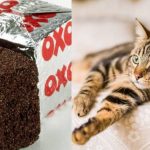Your cat is more than just a pet – they’re a beloved member of your family. As a cat parent, you want to ensure that your furry friend is happy, healthy, and well-fed. But with so many cat food options on the market, it can be hard to know what to choose.
And what about the seemingly mysterious ingredients listed on the label, like tapioca starch? You might be wondering – is it safe for my cat to eat? Will it help or harm their health?
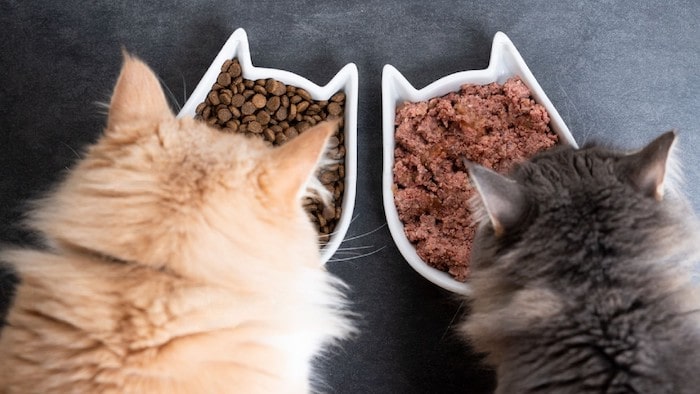
Don’t worry, we’ve got you covered. In this article, we’re going to dive into the world of tapioca starch in cat food. We’ll explore what it is, why it’s used in cat food, and what benefits (and potential risks) it may offer your feline friend.
We’ll also answer common questions about tapioca starch in cat food. So, grab a cup of tea, get comfy, and let’s explore the world of tapioca starch in cat food together!
Contents
What is Tapioca Starch?
Tapioca starch is a white, powdery substance that is derived from the cassava root. The cassava plant is a tropical plant that is commonly grown in South America, Asia, and Africa.
Tapioca starch is extracted from the cassava root by washing and pulping the roots to release the starch, which is then dried into a fine powder.
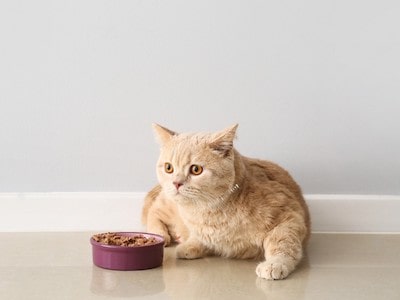
In cat food, tapioca starch is often used as a source of carbohydrates and as a binder to help the kibble hold its shape. It can also be used as a thickener or filler in wet cat food formulas.
Tapioca starch is a gluten-free alternative to other common sources of carbohydrates like wheat and corn, making it a popular choice for cats with food allergies or sensitivities.
However, some pet owners and veterinarians have expressed concern about the use of tapioca starch in cat food, citing potential issues with digestibility and nutrient absorption.
Benefits of Using Tapioca Starch in Cat Food
As per ncbi “Starches provide an effective energy source for dogs and cats and can affect health according to its inclusion and extent of digestion.” There are several potential benefits to using tapioca starch in cat food. Here are a few of them:
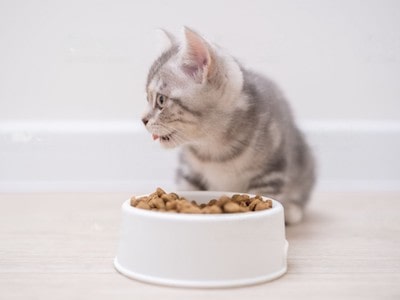
- Gluten-free: For cats with food allergies or sensitivities, tapioca starch can be an important gluten-free alternative to other common sources of carbohydrates such as wheat and corn.
- Easily digestible: Cats with sensitive stomachs or digestive issues may particularly benefit from tapioca starch due to its high digestibility. It is easily broken down and absorbed by a cat’s digestive system.
- Low glycemic index: Cats can benefit from tapioca starch, as it has a low glycemic index and is digested more slowly, helping to prevent blood sugar spikes.
- Source of energy: Cats, especially active or high-energy ones, can benefit from tapioca starch as a source of carbohydrates and energy.
- Binder: Tapioca starch can be used as a binder to help hold the kibble together in dry cat food, which can make it easier for cats to pick up and eat.
Potential Risks of Tapioca Starch in Cat Food
While tapioca starch has potential benefits, there are also some potential risks associated with its use in cat food. Here are a few of them:

- Reduced nutrient absorption: Tapioca starch can be a source of “empty calories” in cat food, meaning that it provides energy without contributing much in the way of other essential nutrients. This can potentially reduce the absorption of other nutrients in the food, leading to imbalances in the diet.
- High in carbohydrates: Tapioca starch is a source of carbohydrates, and while cats do need some carbohydrates in their diet, they are obligate carnivores and rely primarily on protein for their nutritional needs. An over-reliance on carbohydrates in a cat’s diet can potentially lead to obesity, diabetes, and other health issues.
- Digestive issues: While tapioca starch is generally considered to be easily digestible, some cats may still experience digestive issues like diarrhea or vomiting as a result of consuming it.
- Processing: The process used to create tapioca starch involves washing and pulping the cassava root, which can result in the removal of some beneficial nutrients and fibers that would be present in the whole plant.
- GMO concerns: Some tapioca starch is derived from genetically modified cassava plants, which can be a concern for some pet owners.
How to Choose the Best Cat Food with Tapioca Starch
Choosing the best cat food with tapioca starch can be a tricky task, as there are many different factors to consider. Here are a few tips to help you make an informed decision:
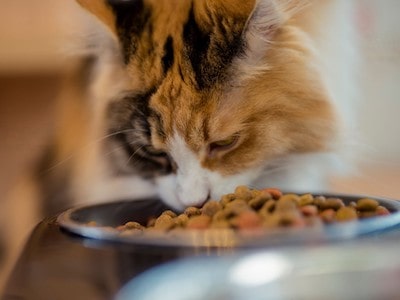
- Read the label: The first step in choosing a cat food with tapioca starch is to read the label carefully. Look for a food that lists a high-quality animal protein (like chicken, fish, or turkey) as the first ingredient, and make sure that tapioca starch is not listed too high on the ingredient list. A good rule of thumb is to look for a food where tapioca starch is listed after the first three or four ingredients.
- Consider your cat’s individual needs: Every cat is different, and the best cat food for one cat may not be the best for another. Consider your cat’s age, weight, activity level, and any health issues they may have when choosing a food.
- Look for a complete and balanced diet: Make sure that the cat food you choose provides a complete and balanced diet, with all the essential nutrients your cat needs. Look for foods that are AAFCO (Association of American Feed Control Officials) approved to ensure that they meet the appropriate nutritional standards.
- Consider wet vs. dry: Both wet and dry cat food can contain tapioca starch, but wet food tends to have fewer carbohydrates overall. If you’re concerned about the amount of carbohydrates in your cat’s diet, you may want to consider feeding more wet food.
- Talk to your veterinarian: Your veterinarian can be a great resource when it comes to choosing the best cat food for your pet. They can help you determine your cat’s individual nutritional needs and make personalized recommendations based on their health status.
FAQs
Is tapioca starch safe for cats to eat?
According to 21cats “Tapioca is healthy for cats, but you may not want to feed it to your cat every day as it may cause diarrhea and vomiting in your pet.” Tapioca starch is generally considered safe for cats to eat, but as with any ingredient, it’s possible for some cats to be allergic or sensitive to it. If you notice any signs of an adverse reaction in your cat, like vomiting, diarrhea, or itching, you should stop feeding the food and talk to your veterinarian.
Is tapioca starch a good source of nutrition for cats?
Tapioca starch is not a particularly nutrient-dense ingredient, and it’s not a great source of protein, vitamins, or minerals. However, it can provide a source of carbohydrates and energy for cats, and it can be a useful ingredient in a balanced and complete diet.
Can tapioca starch cause digestive issues in cats?
While tapioca starch is generally considered to be easily digestible, some cats may still experience digestive issues like diarrhea or vomiting as a result of consuming it. If you notice any signs of digestive upset in your cat, you should talk to your veterinarian to determine the cause and appropriate treatment.
Can tapioca starch contribute to feline obesity?
Tapioca starch can contribute to feline obesity if it’s included in a cat food that has a high percentage of carbohydrates overall. However, tapioca starch on its own is not necessarily a high-calorie ingredient. It’s important to consider the overall nutritional content of the food and the amount you’re feeding your cat to prevent obesity.
Well, It’s a Wrap
In conclusion, tapioca starch is a commonly used ingredient in many cat foods, providing a gluten-free alternative to other carbohydrate sources. While tapioca starch is generally considered safe for cats to consume, some cats may be allergic or sensitive to it, and it may not be the most nutrient-dense ingredient available.
When choosing a cat food that contains tapioca starch, it’s important to read the label carefully and look for a complete and balanced diet that meets your cat’s individual needs.
If you’re concerned about the use of tapioca starch in your cat’s food, or if your cat is experiencing any adverse reactions, talk to your veterinarian for personalized recommendations.
By being informed and making careful choices, you can help ensure that your cat is getting a healthy and balanced diet that supports their overall health and wellbeing.
Charlene Pare is the founder of Cat Likes Best. She manages and strategizes the content published on this website. When she isn’t working, she enjoys exploring the city around with her Ameican Shorthair kitty–Moli. Being a technocrat and an avid cat lover, she also writes on pet tech products and some of the featured articles.




